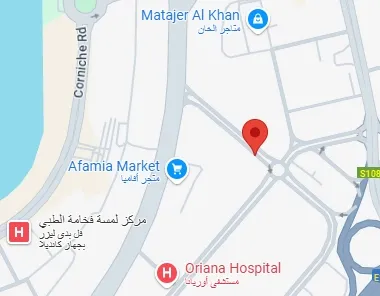In the fast-evolving digital landscape of the UAE, where innovation meets tradition, startups face a crucial decision when building their online presence: should they invest in a custom OS (Operating System) website or opt for a template website? The choice between flexibility and convenience can significantly influence a startup’s growth, branding, and long-term digital strategy. In this article, we explore both options and provide insights to help UAE startups make an informed decision.
Understanding the Basics
Custom OS websites are tailor-made digital platforms developed from scratch or on top of an existing framework. They offer unmatched flexibility and full control over every element — from design and user interface to backend functionalities and integrations.
On the other hand, template websites use pre-designed layouts and pre-built components, which can be modified to some extent. These are typically built using platforms like WordPress, Wix, Shopify, or Squarespace, allowing startups to go live quickly with minimal coding or design skills.
So, Custom OS. Template Websites: What’s Better for UAE Startups? Let’s dive deeper.
Pros of Custom OS Websites
1. Full Customization UAE startups with a unique business model can benefit immensely from custom-built solutions. A custom OS website gives complete freedom in terms of design, user flow, and functionality — ideal for startups in fintech, healthtech, or logistics.
2. Scalability As your startup grows, your website must evolve. A custom OS website can be built to scale, handling more traffic, features, and data as needed — something that template websites struggle with beyond a point.
3. Performance Optimization Custom websites are typically more optimized for performance. Since they don’t rely on bulky code or unnecessary plugins, they load faster — a crucial ranking factor in Google’s algorithm and essential for SEO in the competitive UAE market.
4. Enhanced Security UAE startups dealing with sensitive data (e.g., fintech or e-commerce startups) need robust security protocols. A custom OS website allows developers to implement advanced, startup-specific security measures rather than relying on generic plugin security.

Cons of Custom OS Websites
1. Higher Initial Cost One of the biggest drawbacks is the higher upfront investment. Development, design, and testing can be costly, especially for bootstrapped UAE startups.
2. Longer Development Time Unlike templates, which can go live in days, a custom OS website might take weeks or months to fully develop — something to consider if speed-to-market is critical.
3. Maintenance and Support You’ll need a dedicated team or agency for regular updates and bug fixes, which adds to long-term costs.
Pros of Template Websites
1. Quick Deployment Need to launch your startup website in a week? No problem. With template-based platforms, you can go from concept to live site in just a few days.
2. Cost-Effective UAE startups on a budget can benefit from low-cost templates or even free versions. This allows founders to allocate funds to marketing or product development instead.
3. No Coding Required Entrepreneurs with no technical background can build and manage their own sites. Most template platforms come with drag-and-drop interfaces and user-friendly dashboards.
4. Built-In SEO Tools Platforms like Wix or Shopify offer built-in SEO tools that make it easier for startups to optimize content, metadata, and URLs — a great starting point for UAE startups trying to build online visibility.
Cons of Template Websites
1. Limited Customization While templates offer some level of design flexibility, you’re still confined to the layout and structure of the theme. This can be a significant limitation for startups with unique value propositions.
2. Performance Issues Template websites often include bloated code and unnecessary scripts, which slow down load times — negatively impacting user experience and SEO rankings.
3. Plugin Dependency Many features on template websites rely on third-party plugins. This can lead to compatibility issues and security vulnerabilities if not updated regularly.
4. Scalability Challenges As your startup grows, your website may outgrow the capabilities of the platform. Migrating from a template-based system to a custom solution can be complex and costly.
Custom OS. Template Websites: What’s Better for UAE Startups?
The answer depends on your startup’s stage, budget, goals, and technical capacity.
If you’re launching a Minimum Viable Product (MVP) or a simple portfolio site, a template website may be the most practical and cost-effective option. It allows you to test the market quickly and validate your idea without heavy investment.
If your startup involves complex functionalities, such as AI integrations, user dashboards, or payment gateways tailored to UAE regulations, a custom OS website is the way to go.
If branding and UX are your top priorities, custom solutions offer far more creative freedom — essential in competitive niches like luxury services, fashion, and real estate, where first impressions matter immensely.

SEO Considerations for UAE Startups
Regardless of the choice, SEO should be a priority from day one. Here’s how both options stack up in terms of search optimization:
Custom OS websites can be perfectly optimized with clean code, fast loading speeds, structured metadata, and custom URL structures — great for ranking in Google UAE.
Template websites can perform well too if built correctly. Choose SEO-friendly templates, minimize plugins, and optimize images. Most importantly, ensure your site is mobile-responsive, as a significant portion of UAE users browse on mobile.
In both cases, consistent content creation, keyword research, and technical SEO audits are essential to long-term success.
Final Thoughts
Custom OS. Template Websites: What’s Better for UAE Startups? — it’s not a one-size-fits-all answer. For early-stage startups, template websites offer speed and affordability. But as the business matures, a custom OS website becomes a strategic asset — offering flexibility, scalability, and a strong foundation for digital growth.
Before making a decision, assess your current needs, growth potential, and available resources. Whether you choose a template or go custom, the key is to prioritize usability, performance, and SEO to compete effectively in the dynamic UAE market.



